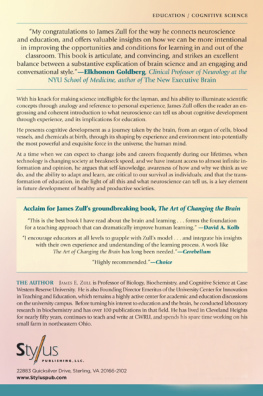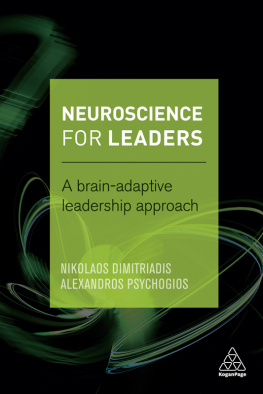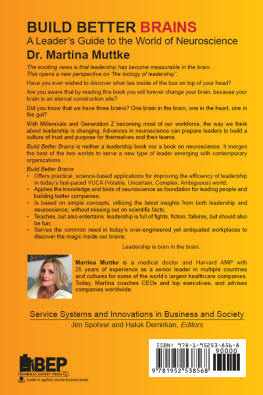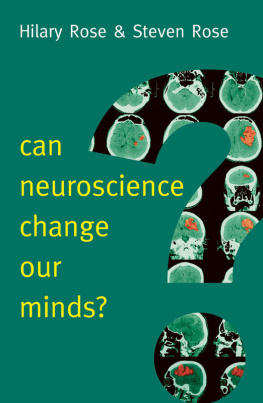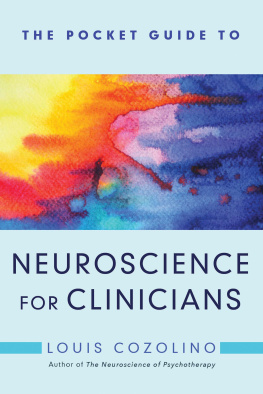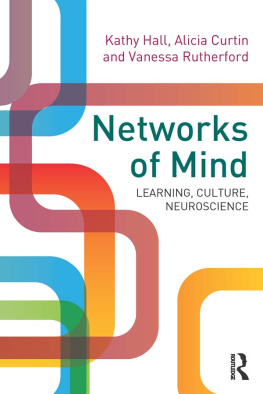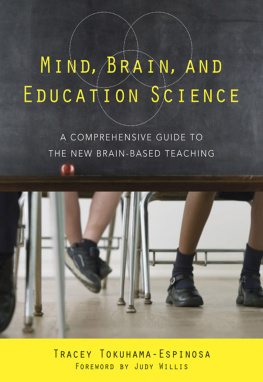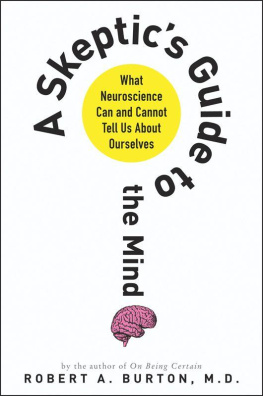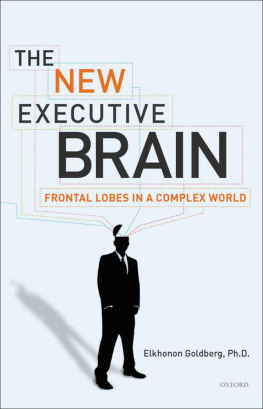FROM BRAIN TO MIND
FROM BRAIN TO MIND
Using Neuroscience to Guide Change in Education
James E. Zull


COPYRIGHT 2011 BY STYLUS PUBLISHING, LLC.
Published by Stylus Publishing, LLC
22883 Quicksilver Drive
Sterling, Virginia 20166-2102
All rights reserved. No part of this book may be reprinted or reproduced in any form or by any electronic, mechanical, or other means, now known or hereafter invented, including photocopying, recording, and information storage and retrieval, without permission in writing from the publisher.
Library of Congress Cataloging-in-Publication-Data
Zull, James E. (James Ellwood), 1939
From brain to mind : using neuroscience to guide change in
education / James E. Zull.1st ed.
p. cm.
Includes bibliographical references and index.
ISBN 978-1-57922-461-5 (cloth : alk. paper)
ISBN 978-1-57922-462-2 (pbk. : alk. paper)
ISBN 978-1-57922-605-3 (library networkable
e-edition)
ISBN 978-1-57922-606-0 (consumer e-edition)
1. LearningPhysiological aspects. 2. Learning,
Psychology of. 3. Cognitive neuroscience. I. Title.
QP408.Z85 2011
612.82dc22
2010044073
13-digit ISBN: 978-1-57922-461-5 (cloth)
13-digit ISBN: 978-1-57922-462-2 (paper)
13-digit ISBN: 978-1-57922-605-3 (library networkable e-edition)
13-digit ISBN: 978-1-57922-606-0 (consumer e-edition)
Printed in the United States of America
All first editions printed on acid free paper that meets the American National Standards Institute Z39-48 Standard.
Bulk Purchases
Quantity discounts are available for use in workshops and for staff development.
Call 1-800-232-0223
First Edition, 2011
10 9 8 7 6 5 4 3 2 1
To Ramsey, Paige, Judy, Bess,
and in memory of Rema
CONTENTS
ACKNOWLEDGMENTS
I am grateful to Hillel, Dave, Alice, Arthur, Elsie, Norm, Joe, and Susan. Each of them read either all or substantial portions of my drafts. And their reading led to significant change for the better. Their contributions are all significant, so I have listed them in alphabetical order below.
Hillel Chiel, neurobiologist, scholar, educator, and overall generally penetrating mind, never flinched when I asked him to read my drafts. As is his wont, he always pointed out something new in what I wrote (new to me that is), and even when he discovered errors or misinterpretations, he remained cheerful. This generous gift of time and talent both flattered and encouraged me. It gave me confidence to go on when the task seemed impossible. I had no illusions about the challenge I had set for myself, and it was Hillel that I trusted to keep me out of waters too deepor at least, near the shore!
Dave and Alice are the Kolbs. It is his work that continues to provide the foundation for all my thinking about the mind. His mind fascinates and amazes mehis depth and humility. Alice makes her own contributions, often providing a perspective that both Dave and I had missed. I still remember the day we sat together on their front porch, going through the ideas, and discussing the big ideas. The fact that they felt there were any such ideas was, in itself, stimulating and encouraging. I greatly value their gifts to me.
Joe Koonce, another of my longtime friends in our Biology Department at CWRU, for a number of years my boss, and enthusiastic supporter of my earlier work, gave me honest and rigorous analysis of my last two chapters. His comments ultimately led me to rewrite the chapter on metacognition, insisting that if he could not understand what I was saying, I probably didnt either. This was invaluable in helping me realize where I was failing as a writer, and how I could address that challenge.
Arthur Lavin is my brilliant and kind pediatrician friend, whom I met and came to appreciate only recently. He understands children, their development, their brains, and their minds. He read every chapter and never failed to point out an opportunity for supporting the learner. He also told me that I should not look to him to affirm any value of fear in learning. It has none! Not even the word challenge pleased him. But he trusted that my heart was in the right place, and for that I thank him. He kept on reading and in general giving me the benefit of his experience, wisdom, insight, and humor.
I met Elzie Ritzenhein somewhat later in the process of writing and quickly realized how valuable her input would be. Her decades-long experience in leading the McComb Academy of Arts and Science, as well as her capabilities as a teacher, educator (writ large), consultant in all aspects of education, and contributor of her own writing, all served me well. She read every chapter, and was particularly supportive while helping me slog through the later ones. She was honest, polite, and supportive but still firm about the parts that were particularly messyattributes that cannot be overvalued!
My long time friend and supporter, Norm Rushforth, read many of the earlier chapters, and gave me extensive, handwritten feedback on them. His attention to detail, combined with his broad knowledge of education, science, and the world in general, led me to expand and rethink my work. He didnt seem to realize that retirement implied that he didnt have to work. He just kept on reading everything I gave him, giving me the benefit of his keen and rigorous statisticians mind.
Finally, of course, there is Susan, my constant and loving wife and friend. I will not go into all the ways she helped me. That would be impossible. But of the two of us, she is the vastly better writer. And she loves the red ink! For this book she also served as editor and critic. She found those messy places where neither she nor anyone else could understand what I had written. And, at the same time she also found the missing commas! For more than 30 years, our partnership has been the foundation that I count on as I struggle to put thoughts into words. There is a path worn between our offices at home, created primarily by my back-and-forth jaunts as I sought the right word, the direct expression, and all the other clarifications and efficiencies that I knew she could provide. I can only reaffirm the recognition I tried to express in my first book. She remains the best idea I ever had!
Thanks to E. R. Kandel for permission to reprint the figure on page .
INTRODUCTION
This book has been on my mind for years. It began as an effort to fill in topics I had given short shrift in The Art of Changing the Brain. I felt I should have written more about very key topics such as memory, attention, or symbolic systems such as language and mathematics. I envisioned a second book entitled something like More Art of Changing the Brain and actually began that project in 2004.
As time went on, I realized that filling in the gaps was not adequate motivation for writing an entire new book. I lost my way and drifted for a few more years. The passage of time began to have an impact. I worried that I would never write again. I still felt that I had new contributions to make so I sat down at my laptop. But I remained uncertain about my message. What did I want to say? And why?
I recognized the answer, or at least a partial answer, to this question in an unexpected way and place. My wife and I were traveling in England, and it was time to return to Heathrow Airport. I noticed that our rented car had a GPS system, and it occurred to me that that we might be able to use it to find the car rental area of the airport. I had never used this technological invention before, but what better time to learn?
Next page
